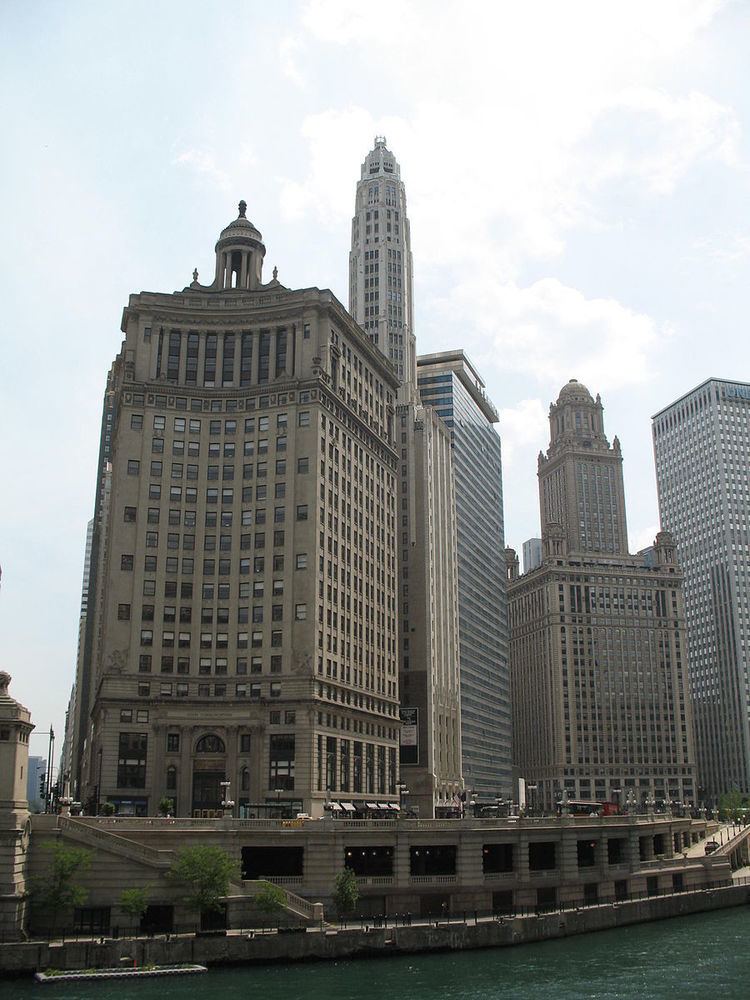 | ||
Downtown Chicago, Illinois has some double-decked and a few triple-decked streets immediately north and south of the Main Branch and immediately east of the South Branch of the Chicago River. The most famous and longest of these is Wacker Drive, which replaced the South Water Street Market upon its 1926 completion. The resulting bi-level street has an upper-level riverfront boulevard, a lower-level roadway for commercial and through traffic, and a recreational walkway at water level.
Contents
History
This configuration was due to geography and traffic patterns in the Loop. Unlike most parts of the rest of the city near the river, most downtown streets crossed the river. All of these crossings are done by bascule bridges and each bridge required height clearances at the approaches to and over the river. Further necessitating clearances were many existing railroad tracks that were along the river (as in the west bank of the south branch) or tracks that ended at the river (for example the tracks ending at Randolph Street). Thus along the river at points of many closely spaced crossings, a clearance zone was created. Many double-decked or triple-decked streets came into being as a result of falling within this clearance zone.
This also created an anomaly not only in the layout and uses of streets, but also planning of buildings. Generally, the upper levels of the multi-level streets usually serve local traffic. The primary entrances of buildings are usually located on this level. The lower levels generally serve through-traffic and trucks serving businesses along the roads. This level houses the receiving/shipping entrances to the buildings on these streets. Noticeable is the absence of such loading docks at street level.
The first raising occurred from 1855 to 1858, when streets and buildings were raised between four and seven feet above their former elevation, just a few feet above lake level, where they were constantly muddy. The higher elevation allowed for sewers and proper drainage. However, this did not produce any two-level streets; the first of those was Michigan Avenue in the late 1910s. When the Illinois Center development was built on the east side of downtown, a new upper level was built, making most streets in that area three levels.
After about 1890, special interest groups, including recreational bicyclists, farmers delivering harvested crops to market, and motorists, began to mount support for concrete paving to replace the previously common dirt roads. Public road planning in Chicago began in 1910 when the Chicago Plan Commission was created to implement Daniel Burnham and Edward Bennett's plan.
The double-decked portion of Wabash Avenue north of the Chicago River was built in 1930, in conjunction with the single-level Wabash Avenue Bridge. On January 3, 2005, the upper and lower levels were closed at Kinzie Street for reconstruction (in conjunction with the Trump Tower Chicago development) but have since been reopened.
The city's famed Billy Goat Tavern, immortalized by John Belushi in a Saturday Night Live sketch as the Olympia Cafe, is located on the lower level of Michigan Avenue.
List of streets
The following streets have double- or triple-decker sections:
The McCormick Place Busway connects the southerly convention center to the northerly lower level street grid.
